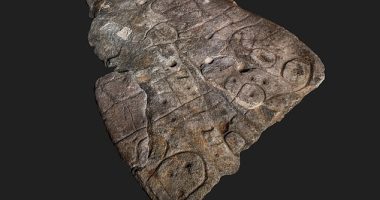
Douglas McCulloh was in San Diego for an art exhibit earlier this month when his phone erupted with texts about a wildfire back home in Los Angeles. It broke out that morning in the neighborhood of Riverside, amid the dry brush lining the Santa Ana River. By night, changing winds had pushed it just 1,000 feet from his home, a 1920s Spanish-style house he’s shared with his wife for two decades.
It was a surreal turn of events—not just because it’s February, months before wildfire season typically begins, but also because McCulloh is the curator of Facing Fire: Art, Wildfire, and the End of Nature in the New West, which opens later this month at the California Museum of Photography.
“I’m all in favor of promoting a show,” he says, “but I’d rather not have my house burn down.”
McCulloh grew up knowing how quickly winds—at least, political ones—can change: His mother’s family worked in Austrian politics before World War II and fled Vienna when Hitler suddenly annexed the country in 1938. As a result, randomness and chance have always driven his photography and art, rooted in his belief that humans “think they control things, but they don’t really.”
It’s what drew him to the subject of California’s infernos, which engulfed a quarter of a million acres (an area the size of Hong Kong) last year. While wildfires are necessary for forest ecosystems, human-induced climate change and poor forestry practices have unleashed a beast, requiring an ever-larger army of fire trucks and helicopters to quell them. The unpredictable conflagrations burn 400 percent more land today than they did back in 1972, and 15 of the 20 most destructive fires occurred in the last two decades.
Facing Fire chronicles some of the worst of them. Photojournalists like Noah Berger, Josh Edelson, Justin Sullivan, and Stuart Palley shoot alongside firefighters, undergo the same training, and protect themselves with similar armor and gadgets: flame-resistant Nomex suits, helmets, fire scanners, carbon monoxide detectors, and last-resort emergency shelters. Prepared as they are, they never know what might happen. “They’ll say, ‘Oh I thought it was wrapping up and suddenly the wind shifted and three hours later it’s burning 500,000 acres,’” McCulloh says. “It’s super chancy.”
Other photographers’ lives have been upended by them. On October 8, 2017, Norma I. Quintana’s family had five minutes to flee before the Atlas Peak Fire incinerated their home. It burned so hot that when Quintana later sifted through the cinders, she couldn’t find the fridge. She photographed the objects she managed to salvage—porcelain doll legs, metal scissors, the melted shell of a camera—against her black rubber work glove. The images reverberate with personal loss, making the fire’s general statistics—51,057 acres burned, 781 buildings destroyed, six fatalities—heart-wrenchingly specific.
Images like these sometimes make you feel like a voyeur, mindlessly consuming someone else’s tragedy, but it’s hard to avert your eyes. Fire is unlike anything else: a luminous, shape-shifting element that decimates everything in its way. Controlled, it powers every facet of human life, from the kitchen to the oil rig. Loosed, it threatens it, and the aftermath is downright post-apocalyptic. Maybe looking is a form of disaster prep, akin to how telling stories prepared early humans for danger, helping them survive.
But McCulloh thinks the photographs might also work on a metaphorical level—the fire being a stand-in for less visible disasters that loom large. “We live in a weirdly uncertain age. There’s a general apprehension. Society and politics feel unmoored and adrift,” he says. “You can’t put your finger on the slow creep of inequality. But fire, you can see it.”
And see it McCulloh did. The Riverside fire charred 70 acres, feeding a black smoke plume he glimpsed from 65 miles away, driving home from a trip to San Diego. The blaze never reached his house, but the experience still stunned him. The next day, his yard was coated with fine white ash and peppered with carbonized twigs, shards, and other debris—a disconcerting reminder of just how close it got.
More Great WIRED Stories








